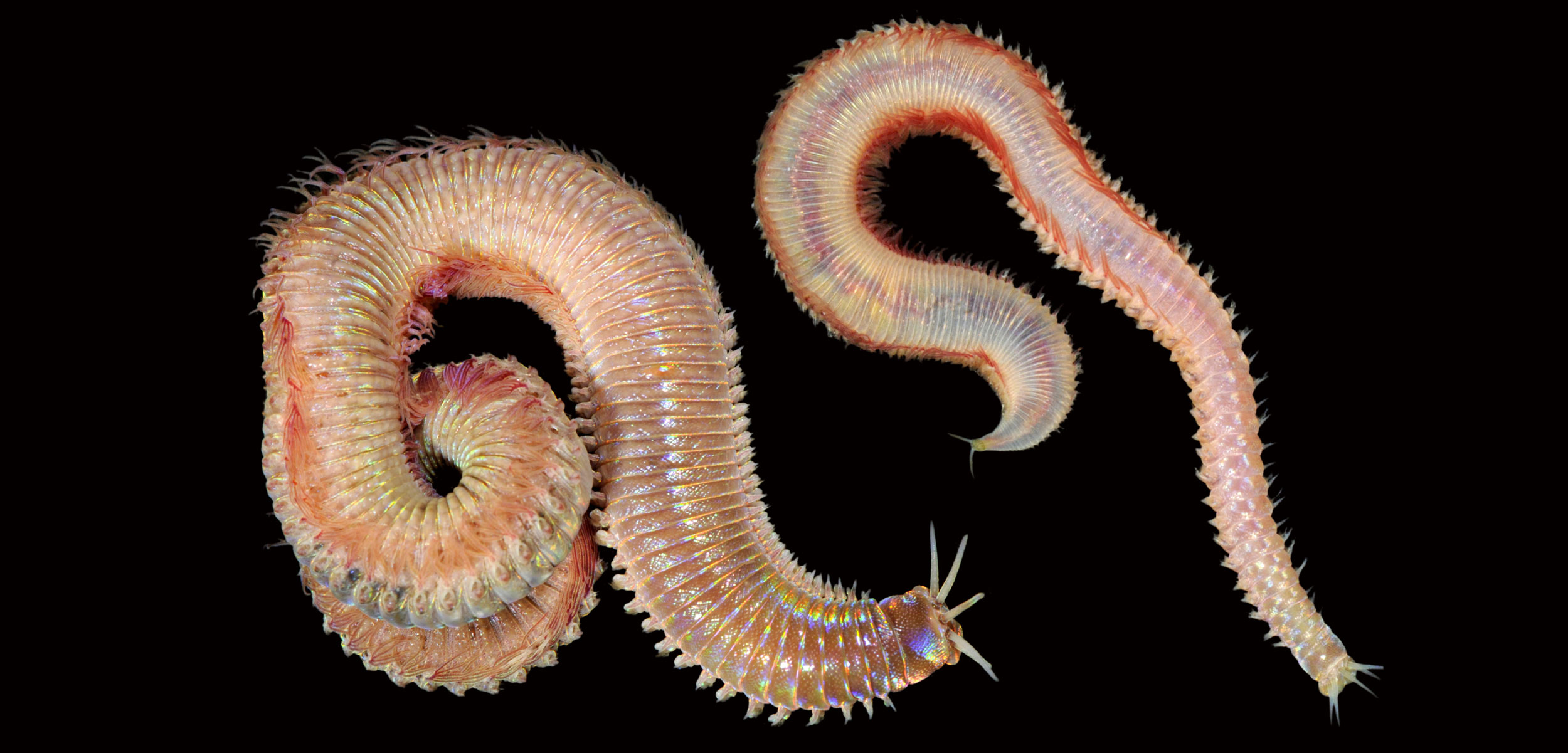Marine Worms Are Eating Plastic Now
In the burgeoning plastisphere, these worms are plastivores.
Article body copy
On land, earthworms chow down on dead leaves and fungi and poop out tiny bits of organic matter that enrich the soil. In the sea, it turns out that some marine worms chew on floating plastic and poop out microplastics—a troubling discovery brought to light in new research by scientists in South Korea.
Concerned about the effects of plastic pollution on marine ecosystems, scientists from the Korea Institute of Ocean Science and Technology collected eight discarded buoys that were adrift off the Korean coast. The plastic buoys were made out of expanded polystyrene, better known as styrofoam, and the researchers wanted to see if anything was living on them.
Led by environmental chemist Sang Hee Hong, the team found all sorts of organisms on the surface of the buoys, from seaweed and sea squirts to crabs. But when they took the buoys apart, they were surprised to find marine worms living inside. Buried deep within the buoys, polychaetes were chowing down on plastic.
Tamara Galloway, an ecotoxicologist at the University of Exeter in the United Kingdom who has studied polychaetes but was not involved in the new research, says the finding is bad news for the worms and for the wider marine ecosystem. “Our own research has shown that sediments contaminated with plastic particles take longer to pass through the gut of polychaete worms than normal food, leading to a reduction in growth.”
She adds that since marine worms are an important food source for many fish and wading birds, this could have consequences across the food chain.
These polychaetes, which usually live in muddy sediment in shallow water, were using their strong teeth to crush and burrow into the plastic buoys. White styrofoam particles were scattered throughout their burrows and were clearly visible in their digestive tracts through their transparent bodies.
In the lab, Hee Hong and the other scientists put 10 of the worms in seawater-filled beakers and collected their feces. Over the next three days, the polychaetes passed a total of 1,306 pieces of styrofoam, ranging in size from 0.2 to 3.8 millimeters. One particularly prodigious worm pooped out 482 pieces of microplastic.
To get a better sense of how effective these worms are at rendering plastic into microplastic, the scientists placed an adult and a juvenile in separate containers with styrofoam blocks. Within a few days, the worms started to burrow. Over the next week, the adult pooped out 11,200 microplastic particles, while the juvenile produced 2,740—an average of 1,600 and 390 particles per day respectively.
Extrapolating from these results, a single marine worm can create hundreds of thousands of microplastic particles annually. A single buoy containing seven to eight polychaetes—the average number of worms the researchers found per buoy—would produce around a million particles every year.
Marine biologist Richard Thompson, an expert on plastic pollution at the University of Plymouth in the United Kingdom, notes that while this research describes yet another effect of plastic pollution, it says nothing about a possible solution. He says society needs “to stem the flow of plastic to the environment and work towards a more circular economy that considers end of life at the design stage.” The only way to stop marine worms from eating and pooping out microplastic is to stop putting plastic in the ocean for them to eat.

